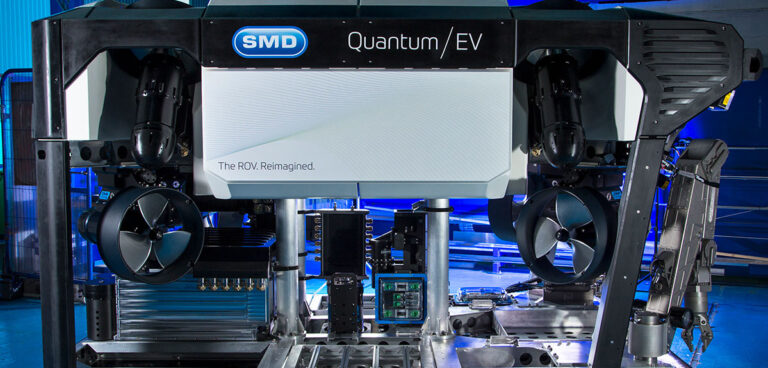Subsea company SMD has revealed details of tests conducted during development of its latest EV ROV after subjecting the vessel and its components to rigorous multi-layer testing and real-world simulations.
After its reveal in September 2019 at OE19, the high-performance electric ROV has undergone multiple phases of testing to ensure it meets the company’s five key design principles of performance, reliability, flexibility, ease of use and cost.
The first phase comprised stress-testing the ROV and all of its components to a depth of 6,000m, which it passed, and environmental testing. Further development of the propulsion system allows the EV vessel to perform optimally for longer periods of time without compromising its stability, consistency or need for manual intervention.
Featuring a completely new 200kW high-power electric thrust system, a newly developed long-distance DC transmission solution and a locally managed DC power system, the subsea vehicle now has a 15% performance increase while only using half as much energy as current work class ROVs. It is also equipped with advanced flight processing for surveying, battery compatibility for tetherless operations and a future-proofed computer system to accept AI command technology.
While being used to maintain traditional subsea infrastructure, the new EV ROV technology is being developed with robotic unmanned surface vessels (USVs) due to its ability to interface with autonomous and onboard decision-making systems.
SMD’s director for remote and autonomous technologies, Mark Collins, said, “Over the past four years our engineering and innovation teams have been on a journey to develop a high performing, stable vehicle that gives our customers ultimate control across a range of sectors and tasks.
“Since September we have put a large amount of effort into testing components in a range of real-world scenarios [and] we are confident it will significantly outperform the current models even in the most challenging of subsea situations.”



